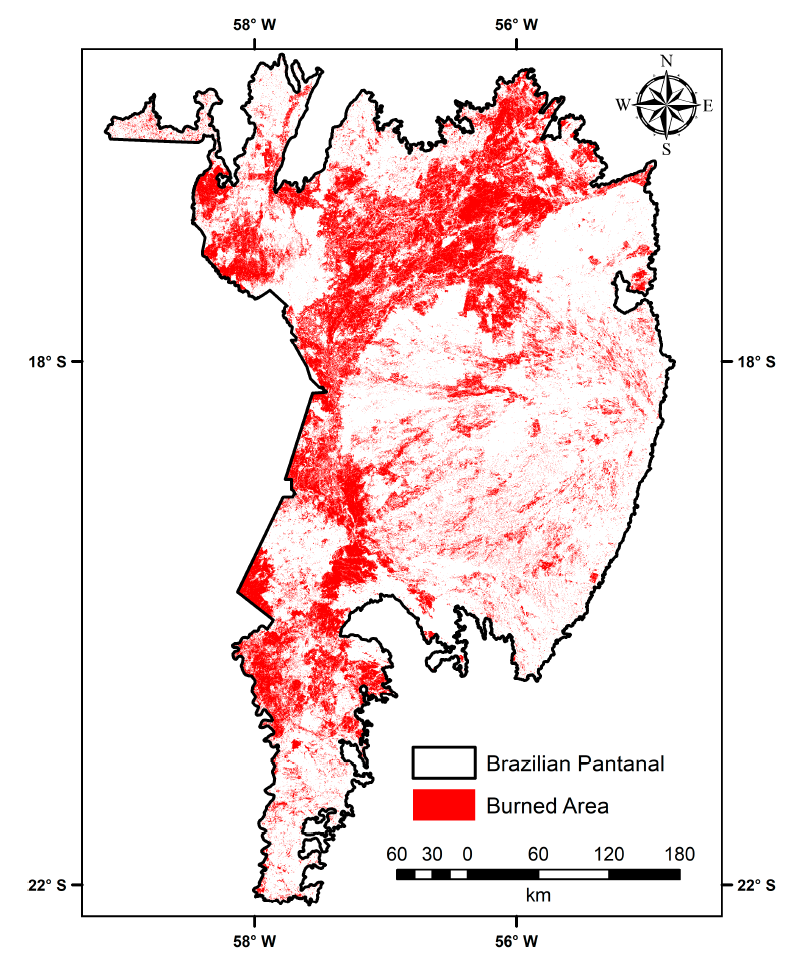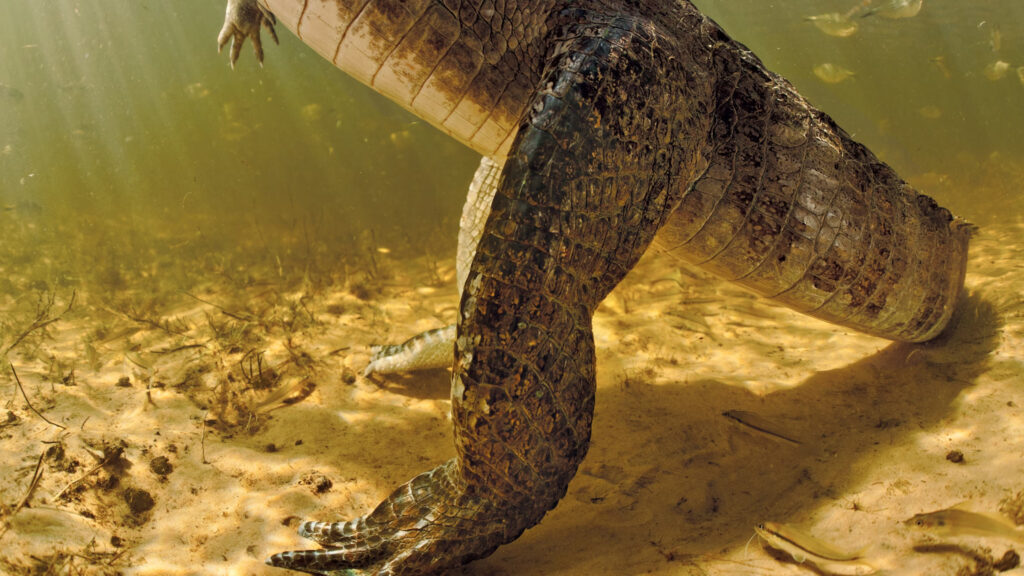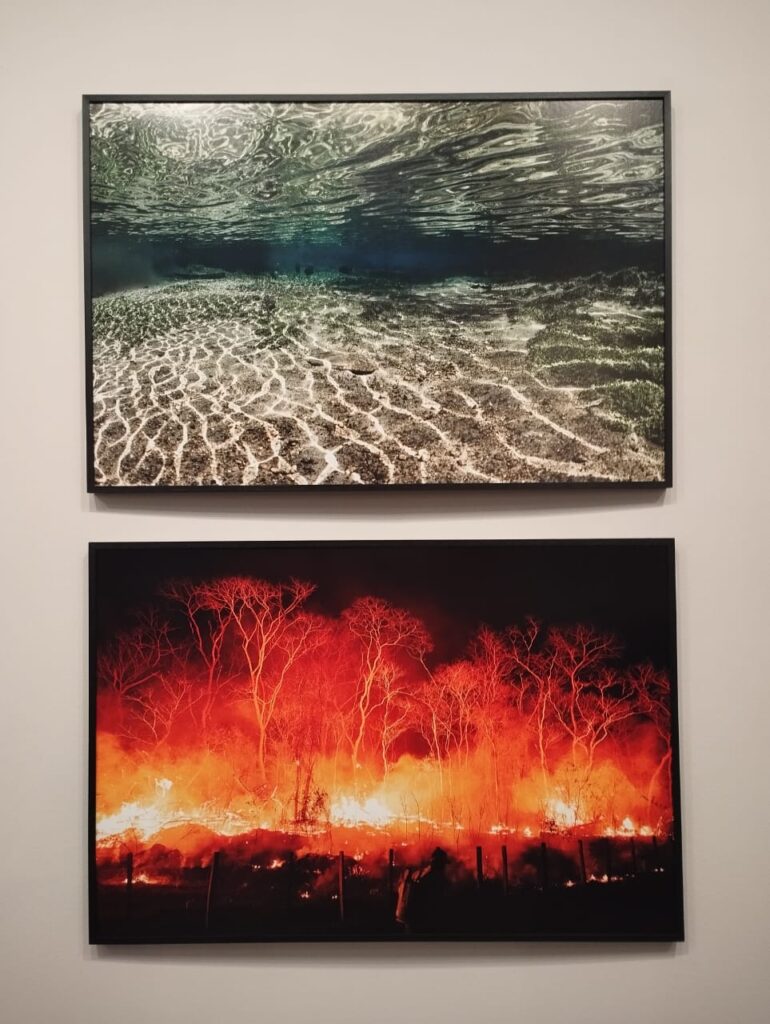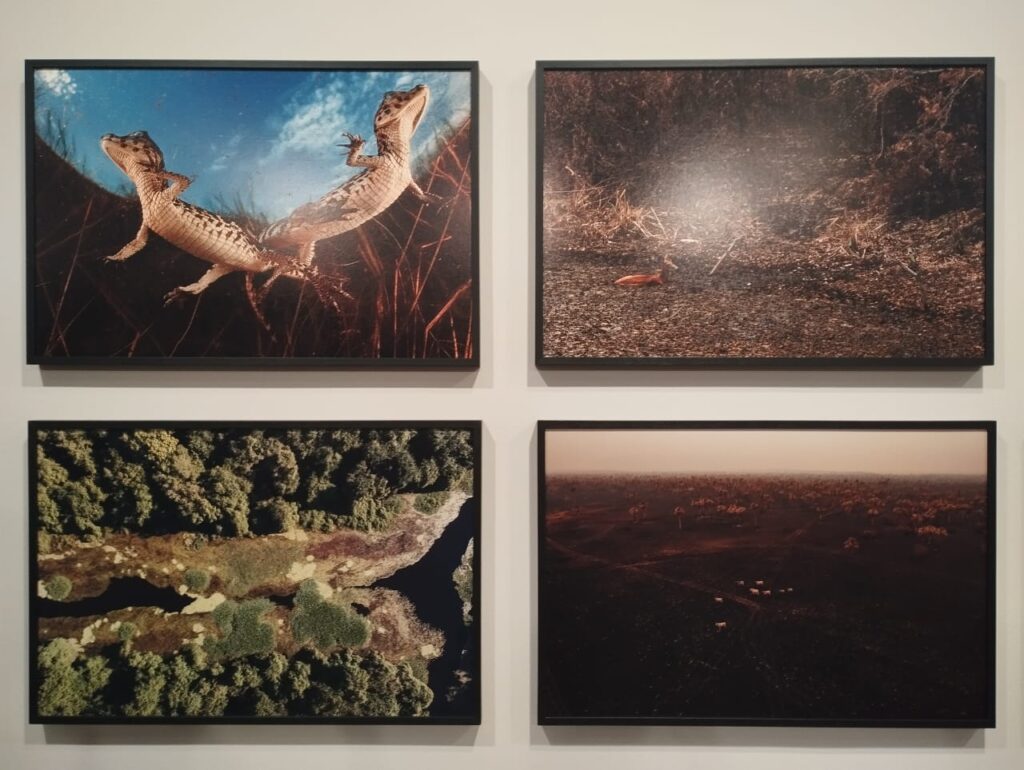Exhibition “Water Pantanal Fire”: The two faces of a threatened plain
In the spring of 2020, when the waters should have begun to inundate the largest and most biodiverse floodplain on the Planet, what was seen was exactly the opposite. The conjunction of two factors, of very different natures, caused instead of waters, fire to cover 30% of the delimited area of the Pantanal.

Spatial distribution of burned areas in the Pantanal in 2020. Source: https://doi.org/10.3390/fire6070277
On one hand, an atmospheric phenomenon of natural cause prevented the entry of moist air masses over the Pantanal, causing the worst drought in decades in the region. On the other hand, a deliberately destructive political environment to promote cattle ranching took advantage of the drought to burn the grasslands and natural savannas with the aim of increasing the pasture area destined for extensive cattle breeding.
According to José Marengo, a researcher at CEMADEN, the 2020 drought in the Pantanal was caused by a phenomenon called “meteorological blocking, characterized by the emergence of an area of high pressure that prevented rainfall formation throughout the South American Midwest region. Consequently, the temperature became very high, and the relative humidity very low”. In an interview with Agência FAPESP, the scientist stated that “this phenomenon is natural and occurred similarly during the drought in São Paulo, between 2014 and 2016” and that it is not necessarily an event related to climate change. However, he points out that this event is different from past droughts because the planet is now warmer and the population in the Pantanal exposed to these phenomena is larger.
The pressure from agriculture and livestock to expand its dominion over the Pantanal is also greater. Livestock farming has a centuries-old tradition well adapted to the Pantanal plains, where there are traces of human occupation dating back at least 8,000 years. However, under a federal government with an openly anti-conservationist agenda in favor of extensive cattle ranching, landowners criminally took advantage of the drought to use fire to replace natural grasslands and savannas with pastures of non-native grasses to the Pantanal, but very well adapted and even invasive, harming the local flora. The expansion of extensive cattle ranching is one of the reasons why all endemic plant species of the Pantanal are threatened, “Endangered” or “Critically Endangered” and was the main cause of so much burned area in the spring of 2020.
As a direct result of these fires, around 17 million non-human vertebrates died. Furthermore, the ecosystem as a whole weakens, and its resilience to future fires also decreases. This directly impacts the lives of the Pantanal population, who, like a handful of landowners, also depend on cattle ranching, but practiced on a scale compatible with the cycles of floodplains ecosystems.
In this scenario, photographer Lalo de Almeida was one of those who worked to document the destruction of the Pantanal and denounce the action, or rather, the inaction, of the federal government in combating the criminal fires of 2020. This project earned him first place in the environmental category of the 2021 World Press Photo contest. The following year, he won the Long-Term Photographic Project award from the World Press with his essay on the destruction of the Amazon. The power of his photos, from the epicenters of tragedies, speaks much more than numbers.

A howler monkey, by Lalo de Almeida
Lalo, who photographs for the immediacy of the journalistic medium, does not intend to be in galleries or exhibitions. However, his enlarged prints are impressive and worthy of surviving time, on the walls of exhibitions and museums. For this reason, curator Eder Chiodetto places him in the exhibition “Água Pantanal Fogo” (Water Pantanal Fire) alongside Luciano Candisani, another of the greatest names in documentary photography in action, who brings the exuberance of the Pantanal waters in their natural and expected flooding regime.
For more than ten years, Candisani documented the waters of the Pantanal like no one else. His experience in underwater photography led him to pioneering and even discoveries in the Pantanal environment. One of the first to photograph the icy waters of Antarctica, he also revealed an unknown underwater Pantanal. Amidst the murky waters, Candisani found places and ways to portray the underwater life of the Pantanal, showing up close the docility of the caimans concentrated on their prey and standing still, like dinosaurs.

Standing caiman, by Luciano Candisani
Concerned with destruction, Candisani photographs the beauties of biodiversity and landscapes of the Pantanal to alert about its potential disappearance. His photos have earned him several awards, such as the Wildlife Photographer of the Year, a contest in which he now serves as a judge, as well as numerous publications in magazines such as National Geographic.
Thus, amidst the exuberance of the waters and the destruction of uncontrollable flames, the Pantanal survives. Two faces of the same reality that, exposed in the same room, form the exhibition “Água Pantanal Fogo“. Two independent documentary works that gain new meaning when placed side by side.

The exhibition, opened on March 7, 2024, takes place at the Tomie Ohtake Institute in São Paulo and will be open to the public free of charge until May 12. In addition to photographs, curatorial texts add information that sensitizes for the conservation of the Pantanal. Furthermore, some artworks are for sale to raise funds for brigades combating out-of-control fires.


For me, it is no exaggeration to say that it is one of the most important photographic exhibitions of the year. There are currently several other exhibitions in Brazil that I will comment on in the future, which deserve attention and with socio-environmental themes of equal relevance. What sets “Água Pantanal Fogo” apart, besides bringing together two of the world’s leading names in documentary photography, is the fact that it shows the two extremes of a reality in an impactful and at the same time beautiful way, as an invitation to the public to mobilize for the environment. Together, the photographs impress and also inspire us to hope for a preserved and socially balanced Pantanal.
SERVICE
Exhibition: Água Pantanal Fogo
Photographers: Luciano Candisani and Lalo de Almeida
Curatorship: Eder Chiodetto
Organization: Documenta Pantanal and Instituto Tomie Ohtake
Opening: March 7
On display until May 12, 2024
From Tuesday to Sunday, from 11 am to 7 pm – free admission
Av. Faria Lima, 201 – Pinheiros SP
To learn more
Podcast Vozes do Planeta, 236 – Água Pantanal Fogo – with the artists Luciano Candisani and Lalo de Almeida, by Paulina Chamorro: https://open.spotify.com/show/4Qbbx1JYKUij2erAMGbtnN
Academic papers
Marengo, Jose A., et al. “Extreme drought in the Brazilian Pantanal in 2019–2020: characterization, causes, and impacts.” Frontiers in Water 3 (2021): 639204. https://doi.org/10.3389/frwa.2021.639204
Pompeu, João. “Performance of an automated conservation status assessment for the megadiverse vascular flora of Brazil.” Journal for Nature Conservation 70 (2022): 126272.
https://doi.org/10.1016/j.jnc.2022.126272
Shimabukuro, Yosio Edemir, et al. “Assessment of Burned Areas during the Pantanal Fire Crisis in 2020 Using Sentinel-2 Images.” Fire 6.7 (2023): 277. https://doi.org/10.3390/fire6070277
Tomas, Walfrido Moraes, et al. “Distance sampling surveys reveal 17 million vertebrates directly killed by the 2020’s wildfires in the Pantanal, Brazil.” Scientific Reports 11.1 (2021): 23547. https://doi.org/10.1038/s41598-021-02844-5

One Response